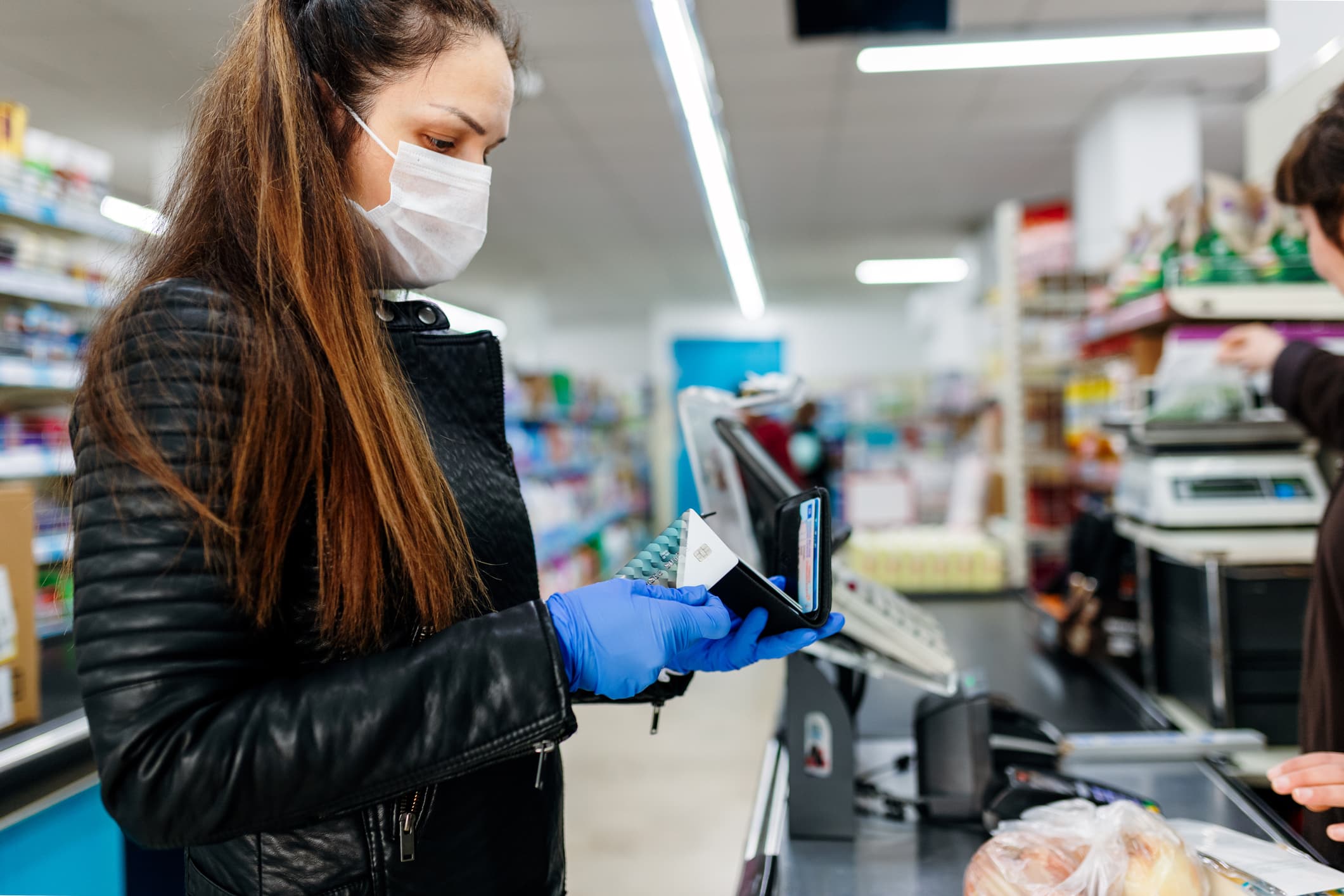Girl wearing mask and gloves in grocery store
Phynart Studio
New data shows the government’s coronavirus stimulus checks are providing much-needed relief to Americans struggling with day-to-day living costs.
Data compiled by digital bank Current found members who received stimulus payments over the past five days spent 16% of the money on food, including takeout and delivery. An additional 9% of spending was on groceries and 10% went toward gas.
“Clearly food is an issue, people are struggling,” Current CEO Stuart Sopp told CNBC. “They’re just trying to survive, and I think that’s what the stimulus was all about.”
The figures give an early glimpse at how Americans will use cash transfers from the government as the coronavirus pandemic has shut down businesses and left millions unemployed.
The CARES Act, which was passed by Congress at the end of March, provided one-time cash transfers of up to $1,200 to individuals to assist with the economic fallout of the pandemic. The Treasury Department said this week that tens of millions of Americans will receive payments via direct deposit by Wednesday.
Most traditional banks will start depositing the checks from the IRS into customers’ accounts this week, but some fintech start-ups have been able to accelerate the payments.
“Instead of waiting, we used our own money, our balance sheets to go and credit those customers as soon as possible,” Sopp said. “We’ll accept the credit risk of the Treasury and IRS, at least for now.”
Current said that, as of Friday, it had credited 16,595 of its members’ accounts with the stimulus payments. Roughy 45% of the money has already been spent, and Sopp said he expects it will all be spent in a matter of weeks.
In addition to food, groceries and gas, Current members spent 14% of the money on transfers to other users on the platform. The company said some users might have borrowed money from others while in need and are now paying them back.
“We saw a lot of people paying their friends and family back,” Sopp said. “Most of that stimulus was already prespent effectively living in between, waiting for that government check to hit the bank account.”
Current, which launched personal checking account products last year, said it has 900,000 members.
— CNBC’s Hugh Son contributed reporting
